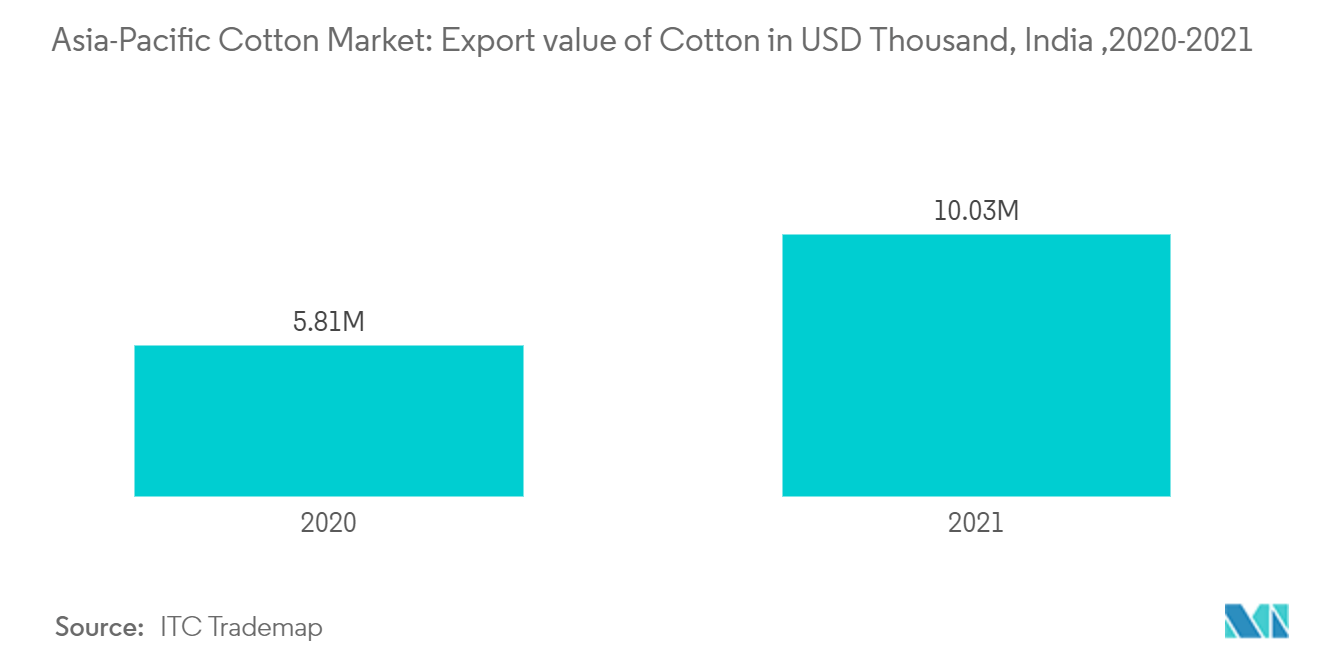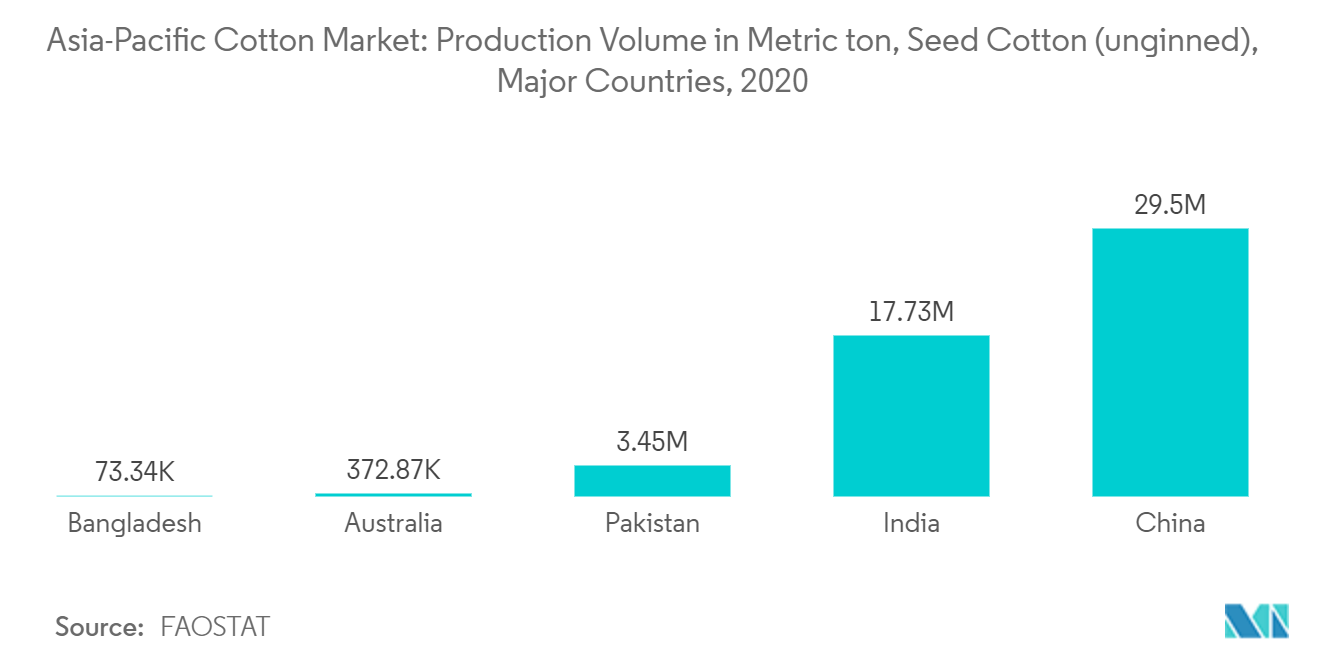Market Trends of Asia Pacific Cotton Industry
This section covers the major market trends shaping the APAC Cotton Market according to our research experts:
Increasing Demand for Natural Fibers
The word 'natural' is ubiquitous hear these days. There are significant advantages of including natural products in daily routine. When it comes to cotton, clothing, jute, silk, kapok, hemp, or wool are considered natural fibers. Across Asia- Pacific, cotton is the most widely used natural fiber. There is a rising popularity of returning to suitable old natural fibers like cotton, a tremendously absorbent natural fiber and hypoallergenic, making it the right choice for sensitive skin. Cotton is all-natural, making for a comfortable and breathable fabric year-round.
The increasing utilization of natural fibers, such as cotton, in the Asia textile industry is driving the export of cotton from Asian countries. China and India are the largest exporters from Asia. The export of cotton from India drastically increased from USD 5,809,190 thousand in 2020 to USD 10,028,337 thousand in 2021.
Most Indian cotton in 2021 was destined for Bangladesh, China, Vietnam, Sri Lanka, and the Republic of Korea. Cotton is the most popular type of fabric used due to its versatility in these countries. It is lightweight, comfortable to wear, affordable, and one of the best to wear in the hot and humid climate of the Asian Sub-continent. Thus, the increasing demand for natural fibers in the Asia Pacific market directly aids in boosting the growth of the cotton market.

China Dominates the Market
China is the largest producer of cotton in the world, with a planted area of approximately 3.0 million hectares in 2021. Both Bt cotton and non-Bt cotton varieties are used in China. Cotton production in China pertains to cotton which is the prime cash crop of China. China leads Asia as well as the global production of cotton. For instance, according to the FAOSTAT database, in 2020, China with the production of seed cotton (unginned), accounting for 29,500,000 metric ton was at the top of the list among India, Bangladesh, Australia, and Pakistan.
Twenty-four of the 35 provinces of China grow cotton, with nearly 300 million people involved in its production. The cotton textile industry in the country employs over 10 million people. Furthermore, the cotton sown area accounts for approximately 30 percent of the total sown area of all the various cash crops in china. The major regions where cotton is a prime crop are the Xinjiang Uyghur Autonomous Region, the Yangtze River Basin (including provinces of Jiangxi and Hubei), and the Huang-Huai Region (mainly in provinces of Hebei, Henan, and Shandong).
The country is the largest consumer market for cotton in the world, as cotton is one of the main raw materials for many Chinese industries. About 50.2 million cotton farming enterprises operate in China, mostly households, with approximately 89.0 million cotton farmers and part-time workers.
China's government policies and programs in support of the cotton sector are one of the key factors which are driving the growth of the cotton market in the country. For instance, in March 2022, China introduced its sustainable cotton standard, covering issues including workers' rights, environmental impact and the use of fertilizers.

